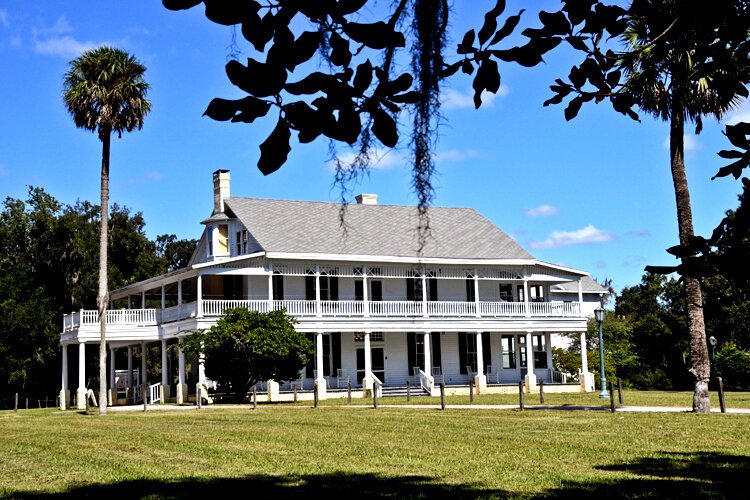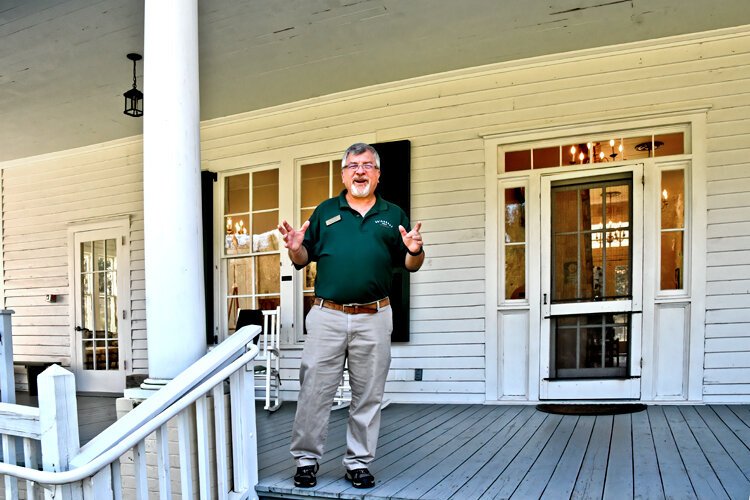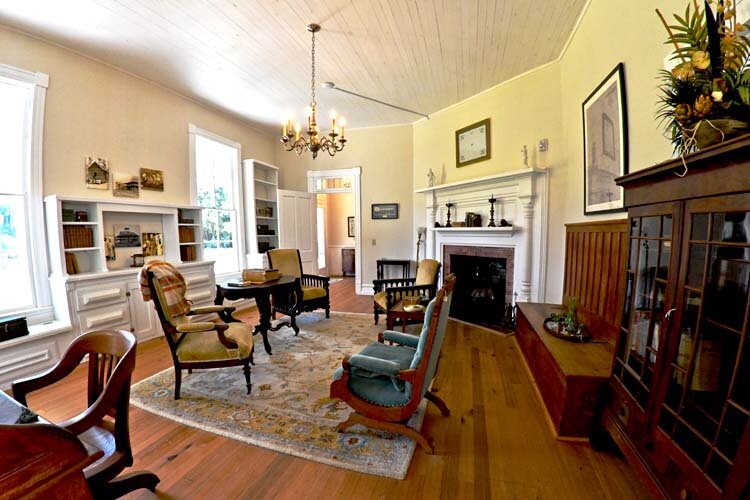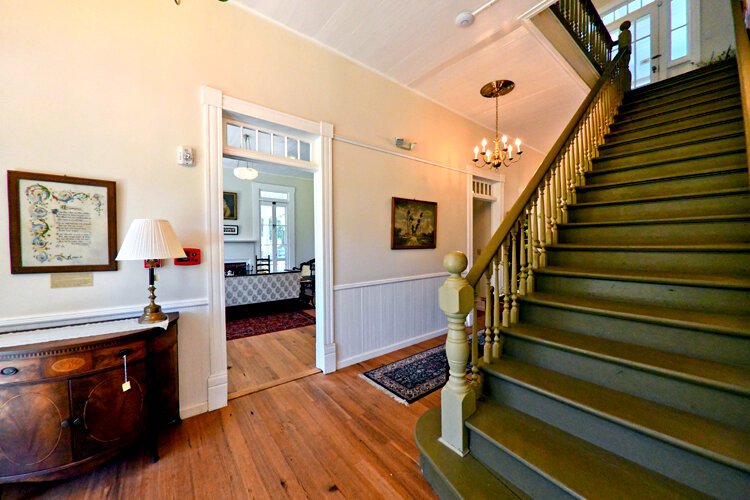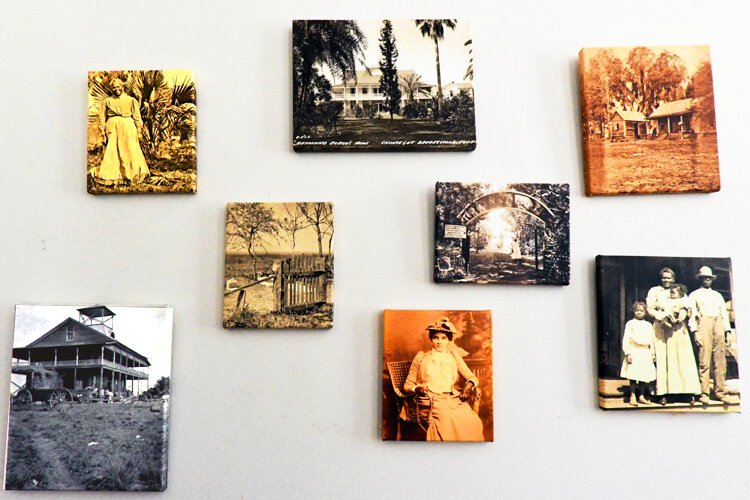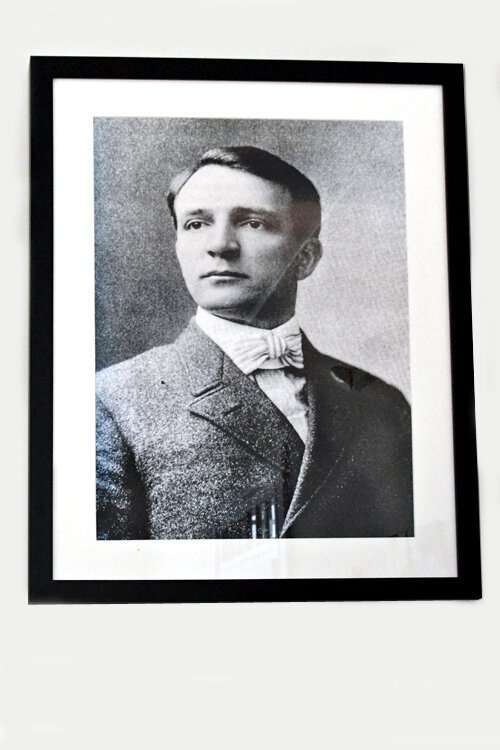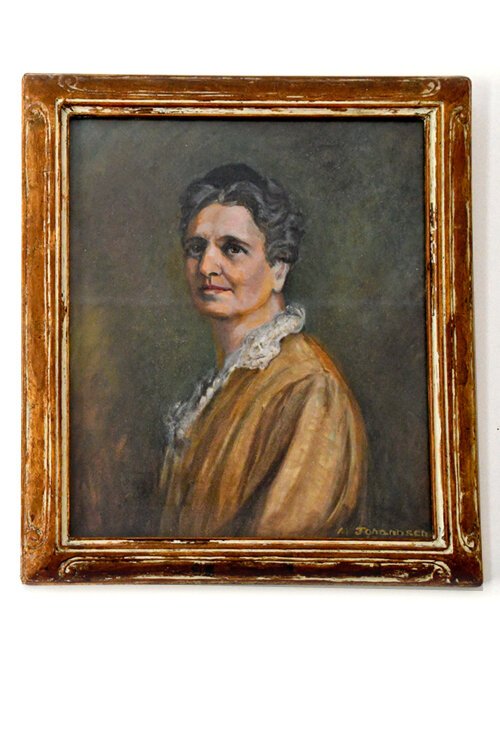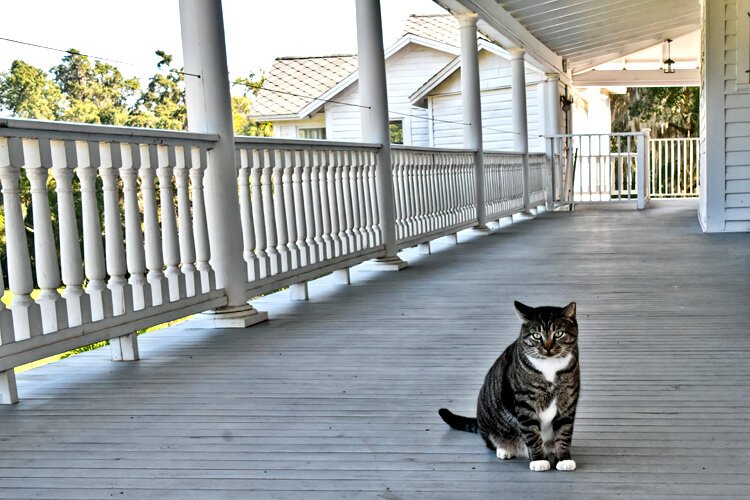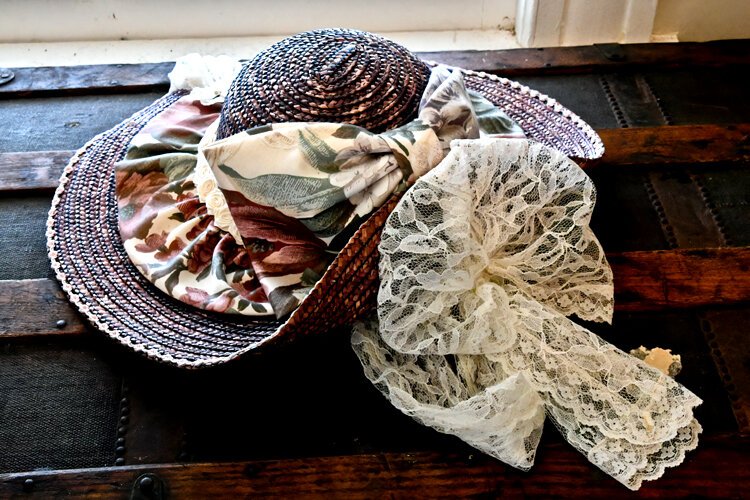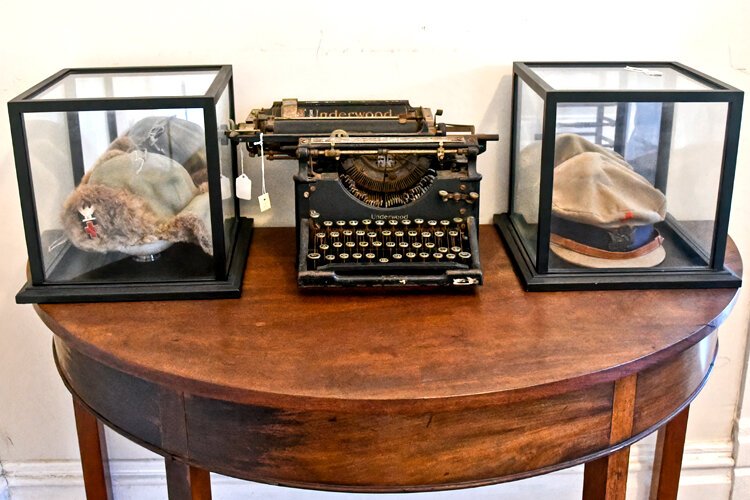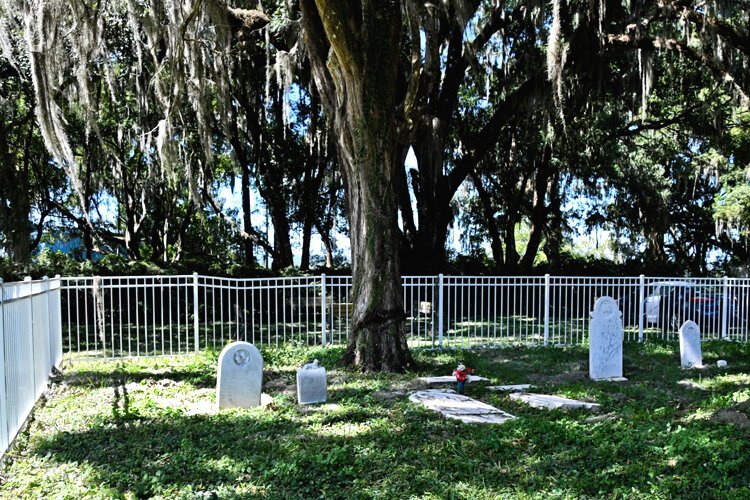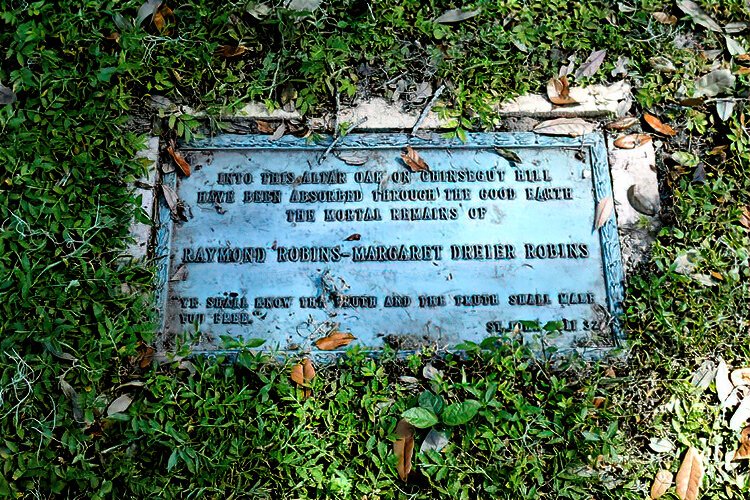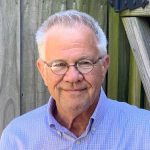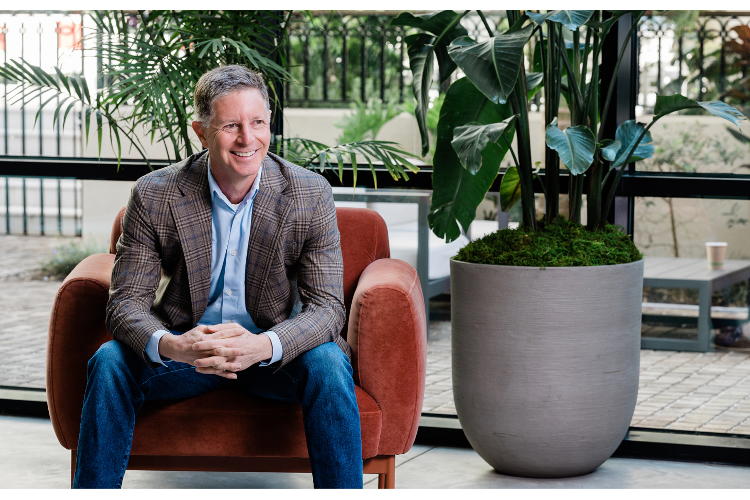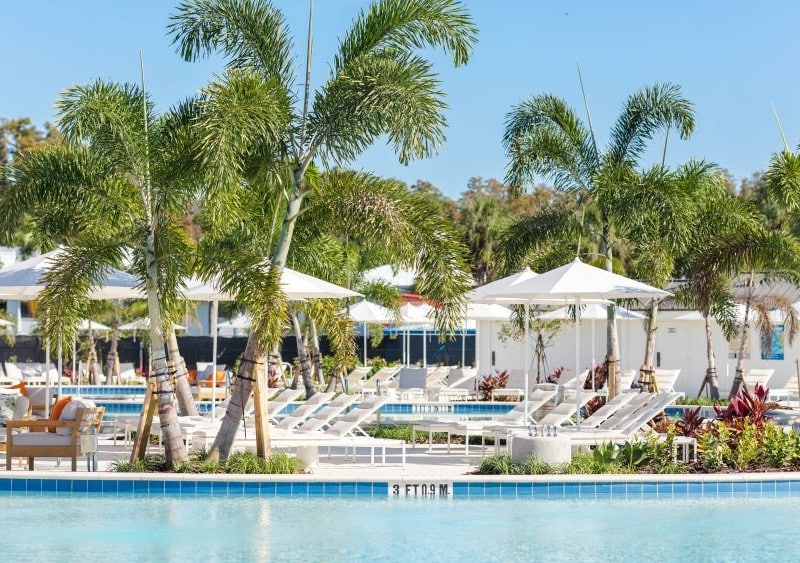Tour Chinsegut Hill and step into Florida’s past
A Tampa Bay History Center tour of the Chinsegut Hill property in Brooksville is a step into Florida's past.
Chinsegut Hill, near Brooksville, sits atop the second-highest point in peninsular Florida, 269 feet, behind only Bok Tower hill in Lake Wales. When morning mist shrouds the valley between Chinsegut and a neighboring hill, the view is surprisingly reminiscent of a Blue Ridge mountain scene.
The manor house isn’t as imposing as a traditional antebellum mansion that you might find in Natchez, Mississippi, but it’s a large, elegant, two-story wood building that was at the center of a sugar cane and corn plantation worked by slaves. The first part of the house, the entranceway and two flanking rooms, was built in 1852.
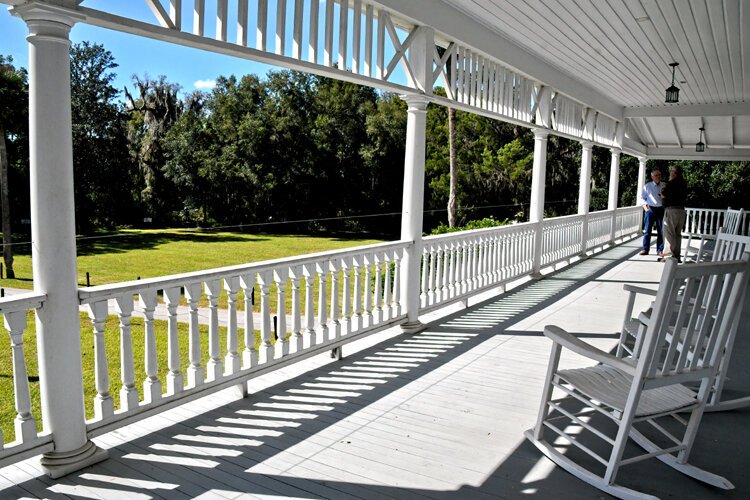
Over the decades, improvements included the addition of a sitting room and parlor and screened porch downstairs, three bedrooms upstairs, two bedrooms and a sitting room in the attic, spacious verandas upstairs and downstairs, a kitchen annex and, in the 20th Century, four bathrooms and electricity.
The last individual owners of the house, quite different from the slave owners, were Raymond and Margaret Robins, ardent supporters of the progressive movement of the early 1900s, led by Republican President Theodore Roosevelt. Raymond Robins was an advisor to seven presidents, from Teddy Roosevelt to Franklin D. Roosevelt, and hosted guests that included Thomas Edison, J.C. Penney, Helen Keller and social activist Jane Addams.
“Chinsegut is kind of a microcosm of the last 200 years of Florida history,’’ says Dr. Brad Massey, the Saunders Foundation Curator of Public History at the Tampa Bay History Center.
Its early owners were slave-holders and its last owners were political progressives. And unlike their predecessors, the Robins, who moved there full time in 1924, weren’t using it as a working farm. They were there to retire in the sunshine, and they invited guests to relax there. It touches on the beginning of Florida becoming a tourist haven, a place of sunshine, recreation and relaxation, he notes.
The house is now owned by Hernando County. The Tampa Bay History Center conducts guided tours of the house on Saturdays and Sundays from 10 a.m. to 5 p.m. Massey researched the history and wrote the program for the tours.
The house is furnished mostly with donated antiques that were typical of the era the Robins lived there.

Some pieces that the Robins owned remain, including a bed that was in the family since before the Revolutionary War.Cross-tied ropes that frequently had to be tightened served as the springs; the mattress was stuffed with the moss that drapes the grand oaks on the property.
The first owner and second owners called the place Mount Airy. The Snows, the third owners, called it Snow Hill. Raymond Robins gave it the name that has lasted.
Pronounced Chin-SE-gut, it’s an Inuit word he likely picked up when he joined the Alaskan gold rush. It roughly translates to “where lost things are found,’’ Massey says. Robins had spent an idyllic part of his boyhood in that part of Florida.
“So for him it’s a revisiting of this happy moment in his childhood,” Massey says.
The docents, well-versed in the history, provide a detailed account of the house and its occupants through the generations.
“I love this kind of thing. I love this history,’’ says Ray Hyde, of Deland.
He, his wife and friends were camping nearby and came to take the tour on a recent Sunday morning. The campground put a brochure on Chinsegut Hill in their welcome packet, says Karen Hyde.
“We were staying one extra day so we decided to come tour it,” she says.
Visitors learn that Chinsegut Hill started out as 160 acres claimed by Col. Byrd Pearson under the 1842 Armed Occupation Act. He built a frontier cabin on the top of the hill in 1847 that archaeologists believe may have been surrounded by a fence, Massey says. He points out that the Second Seminole War had just ended and a third war was to come, so the area was subject to raids.
Pearson, a South Carolina planter, brought more than 20 slaves with him. The cabin no longer exists.
In 1851, Pearson sold the land to another South Carolina planter, Francis Higgins Ederington, who also brought his slaves with him. He raised corn and citrus and sold timber from his land. In 1852, he built the first part of the house. Ederington and his wife, named Precious Ann, had seven children.
Over the years, Ederington added the downstairs parlor and sitting room, plus the upstairs and attic bedrooms. The attic is not open for the tour.
The next owners were Ederington’s daughter, Charlotte, and her dentist husband, J.R. Snow, whose patients opened wide in a dental chair in his home. The Snows, who added the verandas, also added a screened porch on the east side. But in 1897, the home was knocked off its foundation and badly damaged in what was believed to be a tornado spinning out of a hurricane, Massey says. The home was vacated by the Snows.
In 1904, the family sold it to well-known actress and author Elizabeth Robins and her brother, Raymond Robins, for $5,000, and they had the damages repaired. Raymond soon married, and he and his wife, Margaret, ended up living in the house full-time in 1924.
“He’s involved in the progressive political ideas of the early 1900s, fair wages, better living conditions, all these types of things,’’ Massey says. “He also is going to be involved in the Salvation Army doing charity things then ultimately end up in the Soviet Union in its early years as a member of the Red Cross.’’
Margaret Robins served as president of the National Women’s Trade Union League.
With the stock market crash of 1929, the Robins lost much of their fortune. They tried to sell the house but no buyers came forward. They decided to deed the house – for $1 – to the U.S. Government, on the condition they both can live in the house until their deaths. The Department of Agriculture conducted experiments on the property, and during the Great Depression, the grounds were occupied by a Civilian Conservation Corps camp. The recruits from the ranks of the unemployed were paid by the government to do conservation work in the area.
In more recent decades the property was leased to the University of Florida and later to the University of South Florida, which built cabins and a dining hall on the property and used it as a conference center.
Margaret Robins died in 1945. Raymond Robins, who became a paraplegic when he broke his back in a fall from a tree 1935, died in 1954. They are buried under a giant oak tree on the property that they named the Altar oak.

Their grave marker reads: “Into this Altar oak on Chinsegut Hill have been absorbed through the good earth the mortal remains of Raymond Robins – Margaret Dreier Robins.’’
It quotes St. John 8:32: “Ye shall know the truth and the truth shall make you free.’’
For more information go to Tampa Bay History Center Chinsegut Hill.

